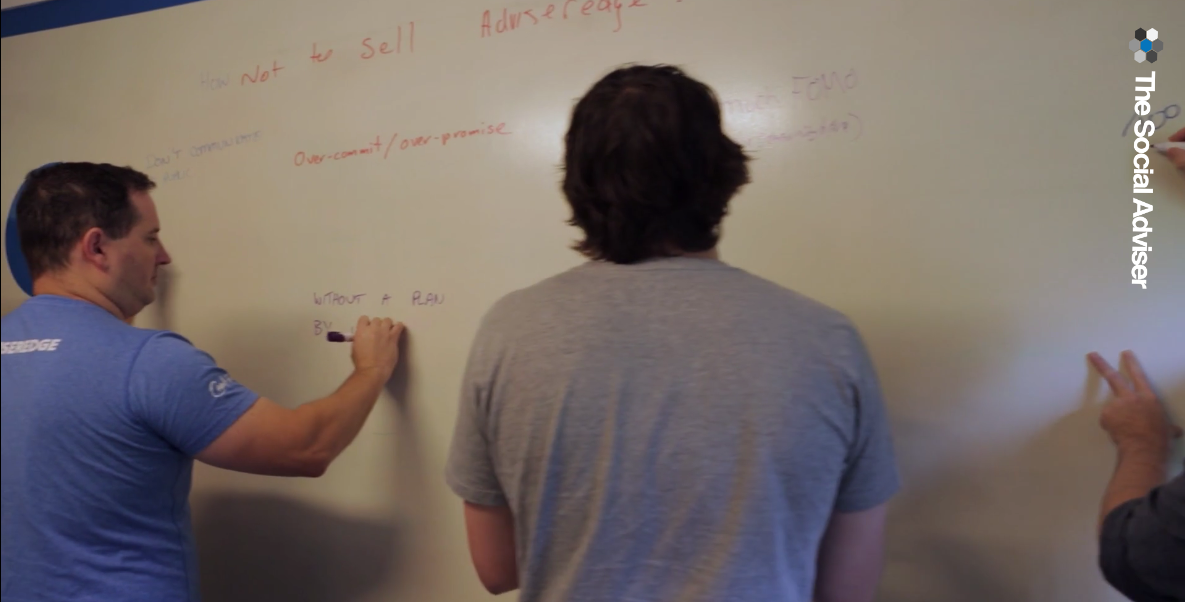This post will introduce you to a philosophy and a process driven exercise which will allow you to create far more successful business development programs both digital and otherwise.
At The Social Adviser, we know how hard it can be to consider all of the nuances needed to launch an effective project for business growth. Whether this be a webinar designed to lead to new client appointments or an event or seminar series to spread word of mouth and grow your client community and referrals.

You see, it is the nuances that always determine whether a project is a success or a flop. We often hear stories from professionals about how they have tried blogging, Facebook advertising, running an event, making new connections on LinkedIn etc etc, only to discover that those projects do not produce results and are therefore worthless for their business.
The reality of course is that all of those business strategies can and do produce excellent results, but only if you nail the nuances. One look at the efforts of those professionals is usually all it takes for us to understand why their endeavours were not successful.
Learn our process …
One of the reasons it can be hard to get the nuances right for a business growth project is that having an attachment to the outcome (getting an ROI), makes it difficult to think completely objectively about what you are doing.
Of course, for Professional Services and Relationship Based Businesses this is even more true because there is a paradox that generally means the more you try to sell or market, the less you will actually sell or market.
If we are being objective the reason for this should be obvious; our business growth is about relationships and trust and attempts to sell and market from a basis of ‘attachment to personal gain’ are generally transparent and therefore relationship damaging.
In practice, launching a new project means time, effort and cost and that makes it very difficult to remove our ‘attachment to the outcome’, which in turn makes it very difficult to see the nuances that will lead to our project being a flop.
So the following exercise uses our brains process and critical abilities, which otherwise may be limiting our success in these situations, to reverse the scenario and turn our blind spots into an advantage.
How To NOT Sell – Team Exercise
About The Exercise
Essentially, we are going to change the perspective you attach to your ‘business growth’ project and by doing so, make it far easier for you to objectively see the nuances you will require to make your project a success.
The exercise involves starting with a question which is a negative, framed as a positive. For example, in our recent application of this process which proved very successful we applied the question ‘How do we NOT sell AdviserEdge tickets?’.
Essentially we are tricking our brains into taking an objective look at the situation, allowing us to document the finer details of ‘what not to do’, which in turn gets us to the ‘what to do’ much more effectively.
This then becomes your checklist of ‘things to look out for’ when you are executing your business growth project, enabling you to see your mistakes before you commit to them.
In This Exercise
This process is best used when you are about to start working on a new project or building a new client facing product/service. The desired outcome is that you will get your team on the same page on the best and worst ways to launch your project. This will also give you and your team some momentum to start getting the project underway.
In other words, you can have your cake and eat it too.
[This process is an extract from a complete guide, which includes detailed instructions, team emails and checklists etc, which will be going live in our Social Hub resource centre soon.]
The Process
- 1. Book an hour with your team. (Half an hour can work with smaller teams on smaller projects.)
- 2. Make sure everyone has a whiteboard/butchers paper/something big enough to write lots of stuff on.
- 3. Explain the exercise and give everyone 15 minutes to go crazy and write heaps of stuff. Reiterate that the idea is to come up with how NOT to achieve your objective.
- 4. Make sure to explain that this is a brainstorming exercise and that there are no good or bad ideas, the point is just to get things down.
- 5. Go around the room and discuss all the ideas, keep in mind there will be double ups and that is ok.
- 6. Don’t apply any critical judgment of anyone’s ideas. It is important to encourage the idea flow for next time round. You will find that everyone will naturally start going into solution mode and be figuring out the best ways to achieve the opposite of the ideas you are coming up with.
- 7. Make sure one or two team members are in charge of holding the team accountable for the ideas you have all come up with. This will include creating a list of all the ideas that the team came up with. Keep this idea list as a checklist to 1) Help you figure out how to actually make the project work and 2) As a reference guide to make sure that you don’t sabotage the project before you launch it.
- 8. Have fun! Growing a business doesn’t have to be all hard work 🙂
This concept was originally introduced to us at The Social Adviser by Adam Bannister our Sultan of Systems and in this interview he talks a little more about the process and its application.
